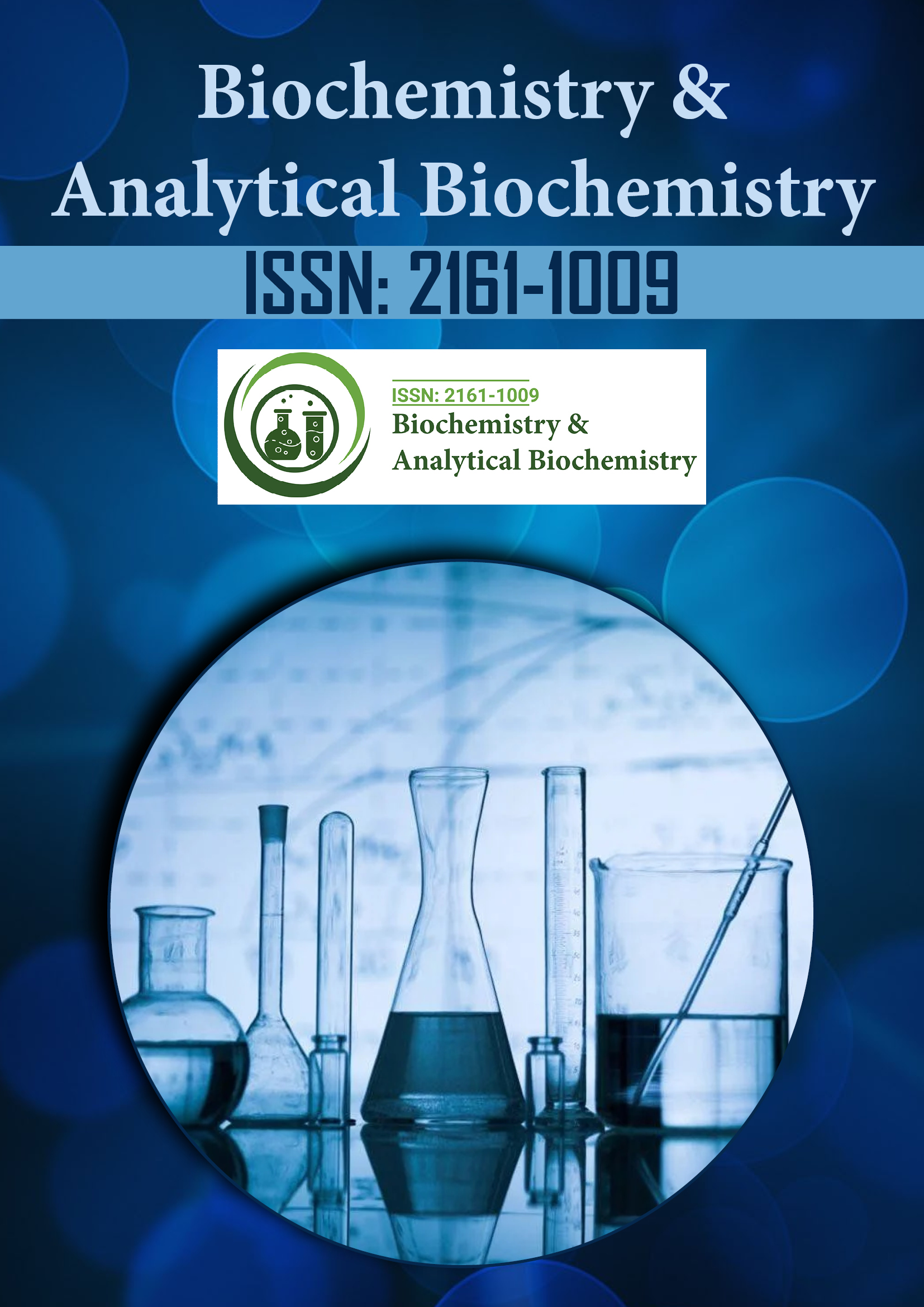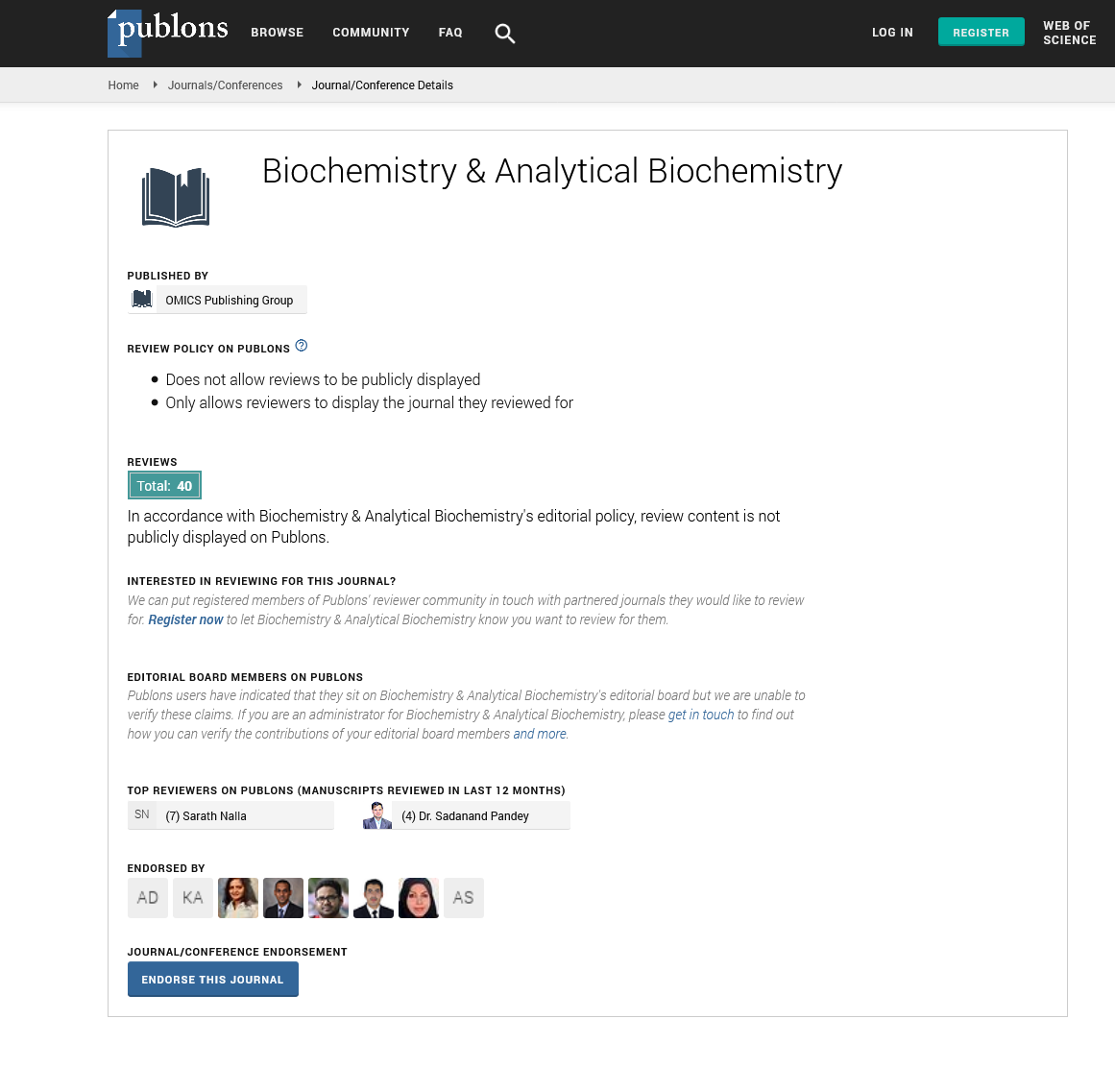Indexed In
- Open J Gate
- Genamics JournalSeek
- ResearchBible
- RefSeek
- Directory of Research Journal Indexing (DRJI)
- Hamdard University
- EBSCO A-Z
- OCLC- WorldCat
- Scholarsteer
- Publons
- MIAR
- Euro Pub
- Google Scholar
Useful Links
Share This Page
Journal Flyer

Open Access Journals
- Agri and Aquaculture
- Biochemistry
- Bioinformatics & Systems Biology
- Business & Management
- Chemistry
- Clinical Sciences
- Engineering
- Food & Nutrition
- General Science
- Genetics & Molecular Biology
- Immunology & Microbiology
- Medical Sciences
- Neuroscience & Psychology
- Nursing & Health Care
- Pharmaceutical Sciences
Creatinine blind area vs. cystatin C blind area in patients with chronic kidney diseases
2nd International Conference on Biochemistry
September 28-29, 2017 Dubai, UAE
N Krishnamurthy
Kamla Nehru Mahavidyalay, India
Posters & Accepted Abstracts: Biochem Anal Biochem
Abstract:
Statement of the Problem: India has large burden of patients suffering from various types of kidney diseases. The follow-up and management of patients with chronic kidney diseases would be an enormous financial burden as the only therapeutic option available is dialysis and transplantation. It is therefore extremely important to obtain hard-core laboratory data to justify the inclusion of serum cystatin C (SCys) as a front-line parameter in the tests done to detect and monitor renal function. The major aim of the study was to establish the utility of SCys in the early diagnosis of patients of chronic kidney disease. It was particularly important to establish whether this parameter rises earlier than serum creatinine (SCr) thereby helping in early intervention. Methodology & Theoretical Orientation: Glomerular filtration rate (GFR) was determined using DTPA renal dynamic imaging (modified Gateā??s method). SCr was measured based on Jaffe kinetic reaction method. Serum Cystatin C was measured by using a particle enhanced turbidimetric immuno-assay. Findings: In the present study of the 60 patients who come under this category 37 had SCr below upper normal level (ULN) coming under false negative category. The remaining 23 however showed abnormal SCr coming under true positive category. By contrast amongst the same 60 patients only 11 had SCys below ULN in the false negative percentage is significantly low as compared with SCr. The remaining 49 had SCys above ULN coming under true positive category. Conclusion & Significance: To conclude the cystatin C blind area is significantly smaller than the creatinine blind area, it is also extremely important from the point of view of management of CKD to have a sensitive parameter. SCys seems to fit into the role. Lifestyle and therapeutic interventions if initiated at this stage could decrease the rate of progression of the disease.

